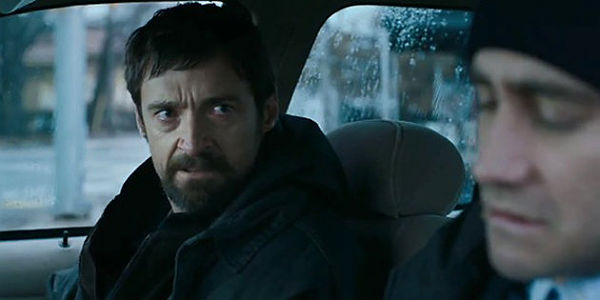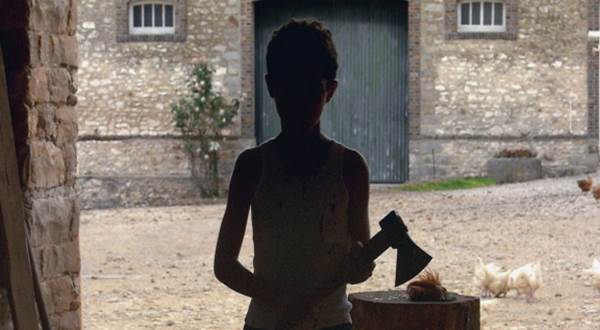İkinci Dünya Savaşı yıllarında Romanya’dan bir gemiyle yola çıkan 769 Yahudi İstanbul açıklarında 72 gün boyunca mahsur kalmış ve içinde bulundukları gemi daha sonra Karadeniz’de bir Sovyet denizaltısı tarafından batırılmıştır. Batan bu geminin ismi Struma’dır.
İkinci Dünya Savaşı sırasında Nazi Almanya’sı Avrupa’nın her kesimindeki Yahudileri hedef almış ve Avrupa’daki her Yahudi kendisini tehdit altında hissetmiştir. Aynı tehdit Romanya’daki Yahudiler için de geçerliydi ve o zamanlar İsrail’e dönüşmek üzere olan Filistin topraklarına doğru yolculuğa başlamak istediler. Bu yolculuğu başlatacak olan geminin ismi Struma idi. Struma gemisi Panama bandıralıydı ve daha önce hiç insan taşımak üzere kullanılmamıştı. Bu nedenle insan taşımacılığına uygun olmayan koşullar barındırıyordu. Örneğin geminin sadece bir adet tuvaleti vardı. Gemiyi işletenler yolcu başına yüklü para aldıklarından olabildiğince yolcuyu istiflemişlerdi. Gemideki olanaksız yerleri kamaralara dönüştürmüşlerdi ve 769 adet yolcuyu gemiye doldurmuşlardı.
Gemi eski ve harap olduğundan dolayı motor bakımları da yapılmamıştı. Geminin motoru seyir sırasında iki kez arızalandı ve ikinci sefer arızalandığında Türkiye sınırları içerisindeydi. Gemi Sarayburnu açıklarına demir attı ve motorunun tamir edilmesi beklendi. Bu sırada Almanya, Türkiye Büyükelçiliği’ne gemide salgın var dedi kimsenin karaya inmemesi için baskı yaptı. Öte yandan Filistin’de egemenlik kurmuş olan İngiltere olacakları öngörmüş ki çok sayıda Yahudi’nin Filistin’e gelmesinin sakıncalı olacağını söyleyip geminin yola devam etmesine izin vermeyeceklerini söyledi. Türkiye ise mültecileri Türkiye’ye kabul etmedi. Çünkü hem Almanya ve İngiltere’nin yoğun baskıları vardı hem de Türkiye savaşta taraf olmak istemiyordu. Romanya da geminin dönmesi halinde gemiyi kabul etmeyeceğini açıklamıştı. Gemi içerisinde 769 Yahudi ile Türkiye karasularında bekliyordu.
Gemi eski ve harap olduğundan dolayı motor bakımları da yapılmamıştı. Geminin motoru seyir sırasında iki kez arızalandı ve ikinci sefer arızalandığında Türkiye sınırları içerisindeydi. Gemi Sarayburnu açıklarına demir attı ve motorunun tamir edilmesi beklendi. Bu sırada Almanya, Türkiye Büyükelçiliği’ne gemide salgın var dedi kimsenin karaya inmemesi için baskı yaptı. Öte yandan Filistin’de egemenlik kurmuş olan İngiltere olacakları öngörmüş ki çok sayıda Yahudi’nin Filistin’e gelmesinin sakıncalı olacağını söyleyip geminin yola devam etmesine izin vermeyeceklerini söyledi. Türkiye ise mültecileri Türkiye’ye kabul etmedi. Çünkü hem Almanya ve İngiltere’nin yoğun baskıları vardı hem de Türkiye savaşta taraf olmak istemiyordu. Romanya da geminin dönmesi halinde gemiyi kabul etmeyeceğini açıklamıştı. Gemi içerisinde 769 Yahudi ile Türkiye karasularında bekliyordu.
Bu sırada Kızılay ve Yahudi örgütünün ortak çalışmaları sonucu gemiye her gün düzenli olarak erzak getiriliyordu. Gemiden sadece Standart Oil Company of New York Petrol Şirketi'nin Romanya Müdürü Martin Segal ve ailesi şirketin Türkiye temsilcisi Vehbi Koç'un girişimleri ile çıkartıldı. Segal ailesinin yanı sıra kanaması olan hamile bir kadının da gemiden inmesine izin verildi ve hastaneye yatırıldı. Gemide kalan yolcuların akıbeti ile ilgili haftalar süren müzakereler sonuç vermeyince, 23 Şubat 1942'de Türk hükümeti, motoru halen çalışmayan gemiyi Karadeniz'de Şile açıklarına çektirdi. Gece boyunca sürüklenen gemi, 24 Şubat sabahı büyük bir patlamanın ardından battı. 103'ü çocuk olmak üzere 768 kişi öldü. Sadece David Stoliar adlı 20 yaşında bir yolcu ve Ivanof Diko isimli ikinci kaptan sağ kurtuldu. Stoliar ve Diko sabaha kadar bir tahta kirişe tutunarak hayatta kalmaya çalıştı. İkili aynı zamanda donmak üzereydi. Daha sonra tüm umutları tükenen Diko kendini akıntıya bıraktı ve yaşamına son verdi. Stoliar ise çaresizlikten bileklerini kesmek istedi ancak donmak üzere olan elleri çakıyı açamadı. Ölmek üzereyken 12 kürekli Türk Kurtarma Kayığı tarafından bulundu ve karaya çıkartıldı.
1970'li yıllarda yapılan araştırmalar sonucunda da geminin bir Rus denizaltısından atılan torpido ile havaya uçurulduğu belirlenmiştir. Büyük Britanya'nın Sömürgeler Bakanı Lord Moyne ise 1944 yılında Struma faciasındaki sorumluluğu nedeniyle bir suikast sonucu öldürülmüştür. Bu yolculuğu düzenleyenler 1942 yılında ölüme sebebiyet vermekten Romanya'da yargılanmışlar fakat geminin batma sebebinin bir denizaltı olması nedeniyle beraat etmişlerdir. Bu olay birçok uluslararası tarafından Türklerin Yahudi soykırımı olarak addedilmeye çalışılır. Fakat işin gerçek yüzünün çok başka olduğu belgelerle kanıtlanmıştır.
Kaynak: http://www.tarihiolaylar.com/tarihi-olaylar/struma-olayi-155


















